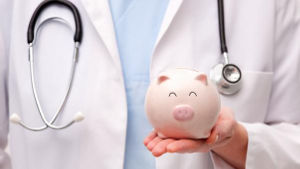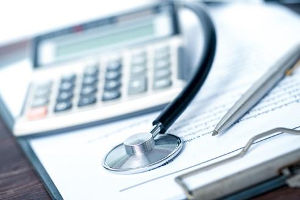The IVF procedure is often preceded by expensive fertility treatments. It is possible to partially cover the costs of specialist services from a reproductive center in the event of a tax deduction. According to the current legislation, patients can return for very expensive medical services up to 13% of the money spent.
Features of the tax deduction
 Can I get a tax deduction for IVF ? This question is asked by many patients planning to use assisted reproductive technologies. Before answering it, you need to understand what constitutes a social deduction.
Can I get a tax deduction for IVF ? This question is asked by many patients planning to use assisted reproductive technologies. Before answering it, you need to understand what constitutes a social deduction.
A tax deduction is an amount of money that significantly reduces the amount of taxation. In some cases, this term is understood as the return of part of the money spent on the payment of mandatory taxes, for example, in connection with the serious financial costs of infertility treatment.
Who can get the IVF tax deduction and how? Only citizens of the Russian Federation can claim a tax refund, whose income is taxed at a rate of 13%. It follows from this that for every 100 thousand rubles spent by the patient, the state returns 13 thousand rubles.
What documents are required?
To obtain a deduction, patients must contact the tax office staff, but only at the place of registration (registration). A declaration is submitted there, in which all monetary expenses spent last year on treatment must be entered. To obtain the required declaration form, you should contact the tax officials.
 To return the tax deduction for IVF , documents are submitted to the same tax office:
To return the tax deduction for IVF , documents are submitted to the same tax office:
- application for the return of part of the funds spent on treatment;
- certificate of payment for medical services provided by a medical institution (issued by the clinic);
- receipts and cashier's checks confirming the fact of transferring money to the account of a medical institution;
- copies of an agreement with a medical institution on the provision of expensive medical services;
- marriage certificate (provided if the taxpayer paid for the treatment of the spouse);
- copy of passport and identification code;
- certificate of income, which indicates the amount of tax deductions (drawn up by the employer's accounting department).
During the course of treatment, it is recommended to keep not only receipts and receipts for payment of certain services, but also the original prescriptions that were issued by the attending physician.
Getting a certificate at a medical facility
 How do I get my IVF tax deduction refunded ? To get back some of the money spent for IVF, the taxpayer must contact the clinic to receive a mandatory package of documents. Tax officers must pass:
How do I get my IVF tax deduction refunded ? To get back some of the money spent for IVF, the taxpayer must contact the clinic to receive a mandatory package of documents. Tax officers must pass:
- a certificate of the costs of paying for the services of a medical institution;
- a written agreement with the clinic for the treatment;
- a medical license certifying the right to carry out medical activities (must be certified by the signature of the head of the medical institution).
To receive the above certificates and copies of documents, the patient must bring separate certificates to the clinic:
- copy of the passport;
- copy of the identification code;
- copy of cash register receipts;
- application for the issuance of documents confirming the fact of payment for medical services.
If the taxpayer intends to return the social deduction for providing medical assistance to his spouse, he will need the following documents:
- copies of the passport of both husband and wife;
- copy of marriage certificate;
- copies of the identification code;
- an application for the issuance of documents that confirm the fact of payment for medical services.
After submitting all the necessary copies of documents and receipts, the necessary certificate is issued by the clinic in 14 days.
How do I calculate the tax deduction?
 The deduction is calculated quite simply - the patient receives up to 13% of the amount spent on treatment. In this case, the income of the taxpayer for 1 year is taken into account, which must exceed the amount paid for the services of the medical center for the year.
The deduction is calculated quite simply - the patient receives up to 13% of the amount spent on treatment. In this case, the income of the taxpayer for 1 year is taken into account, which must exceed the amount paid for the services of the medical center for the year.
Example:
- the total income for 2017 is 530,000 rubles;
- infertility treatment in 2017 cost 215,000 rubles;
- 530,000> 215,000, so the patient will receive a deduction of RUB 27,950.
The amount spent on IVF can be equal to the annual income. But the taxpayer's income should not be less than the money spent on treatment. In such a situation, the difference between them "burns out" and the amount of the deduction is calculated in accordance with the patient's annual income.
Receiving funds
 The tax deduction for IVF treatment is returned after a desk review of all certificates, statements, cashier's checks and other documents. It takes at least 3 months. If no mistakes were made in the preparation of the application and the submission of the necessary documents, tax officials notify the patient of the fact of the overpayment.
The tax deduction for IVF treatment is returned after a desk review of all certificates, statements, cashier's checks and other documents. It takes at least 3 months. If no mistakes were made in the preparation of the application and the submission of the necessary documents, tax officials notify the patient of the fact of the overpayment.
Immediately after receiving the summons, the patient must send an application to the tax service for the return of unnecessarily spent funds. The money is returned within 30 calendar days from the receipt of a notification that there was an overpayment.
Specialist recommendations
To receive the tax deduction in full, the patient must prove that the funds were spent on the treatment. In this regard, it is recommended to keep:
- sales receipts for purchased medicines;
- written prescriptions by a physician;
- receipts for payment of expensive procedures;
- certificates for the provision of medical procedures by the clinic.
It is desirable that the prescriptions written by the doctor be certified with a stamp marked “for tax authorities”. You should also keep the instructions from the drugs and all certificates for the performed medical manipulations - biopsy, Doppler, coagulogram, etc.
Sometimes the refund is carried out in gross violation of the terms. In this case, the taxpayer may demand the return of not only the due amount, but also the interest, which is calculated for each overdue day at the rate established by the Central Bank of the Russian Federation.
